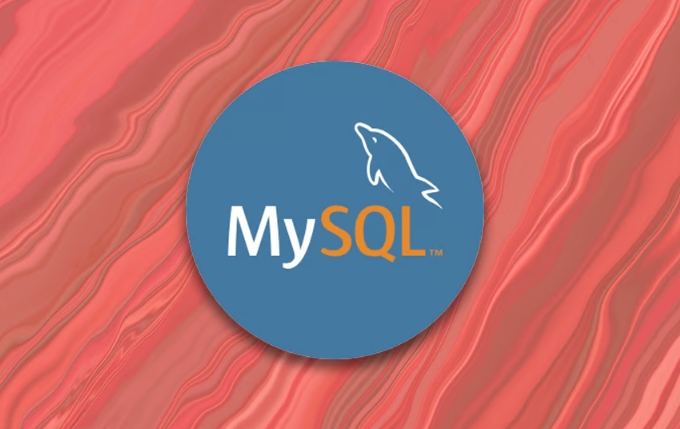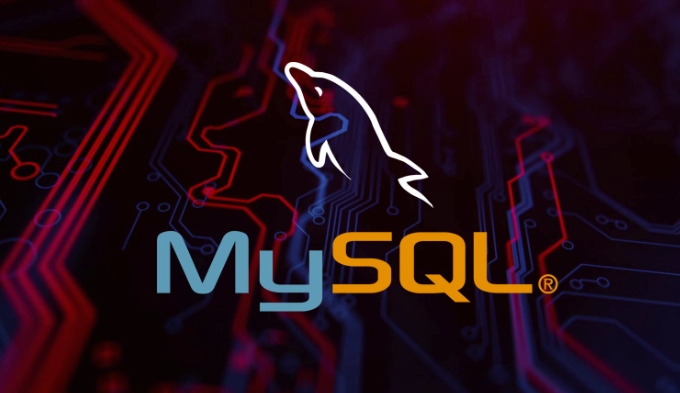(出售)晋中市榆次区蕴华街物质小区交警支队对面13
To securely connect to a remote MySQL server, use SSH tunneling, configure MySQL for remote access, set firewall rules, and consider SSL encryption. First, establish an SSH tunnel with ssh -L 3307:localhost:3306 user@remote-server -N and connect via mysql -h 127.0.0.1 -P 3307. Second, edit MySQL’s config file to change bind-address to the server’s public IP or 0.0.0.0, then restart MySQL. Third, grant remote access using GRANT ALL PRIVILEGES ON database.* TO 'user'@'your-local-ip', and restrict access via firewall tools like UFW with sudo ufw allow from your-local-ip to any port 3306. Fourth, if not using SSH, enable SSL in MySQL by configuring valid certificates and enforcing SSL for remote users.

Connecting to a MySQL server securely from a remote location is a common need, especially when managing databases for web apps or cloud services. The key isn't just about making the connection work — it's making sure it works safely without exposing your data or system to unnecessary risks.

Here are some practical steps and considerations to help you set up secure remote access to a MySQL server.

Use SSH Tunneling for Secure Access
One of the most reliable ways to connect remotely to MySQL is through an SSH tunnel. This method encrypts all communication between your local machine and the MySQL server, even if the database protocol itself isn’t encrypted.
To set this up:

- Make sure SSH access is enabled on the server where MySQL is running.
- Forward a local port through SSH to the MySQL server’s port (usually 3306).
- Configure your MySQL client to connect to
127.0.0.1on the forwarded port.
For example, this command forwards port 3306 on the remote server to port 3307 locally:
ssh -L 3307:localhost:3306 user@remote-server -N
Then, connect using:
mysql -h 127.0.0.1 -P 3307 -u your_user -p
This way, the actual database credentials and queries travel through an encrypted tunnel, reducing the risk of interception.
Configure MySQL to Allow Remote Connections
By default, MySQL binds only to localhost. To allow remote access, you'll need to adjust the configuration.
- Open the MySQL config file (
/etc/mysql/my.cnfor/etc/my.cnf) and look for thebind-addressline. - Change it from
127.0.0.1to the server's public IP or0.0.0.0(which allows connections from any IP). - Restart MySQL after saving changes.
Also, make sure that:
- The user account you're connecting with has privileges for remote hosts — not just
localhost. - You're not allowing overly broad access like
'user'@'%'unless absolutely necessary.
You can grant access specifically to the IP address you're connecting from:
GRANT ALL PRIVILEGES ON database.* TO 'user'@'your-local-ip' IDENTIFIED BY 'password'; FLUSH PRIVILEGES;
This adds a layer of control by limiting which IPs can connect.
Secure the Server with Firewall Rules
Even if you’ve configured MySQL properly, leaving port 3306 open to the public internet is risky. Firewalls help limit who can reach that port in the first place.
On the server side:
- Use tools like
ufworiptablesto restrict access to MySQL's port. - Only allow traffic from specific IPs or ranges.
For example, using UFW:
sudo ufw allow from your-local-ip to any port 3306
If you're not using direct remote access and prefer SSH tunneling instead, just block port 3306 entirely — it doesn’t need to be open at all in that case.
Also, avoid having MySQL listen on a public interface unless you have strong reasons and proper protections in place.
Consider SSL for Direct Remote Connections
If you're connecting directly over the network (not using SSH), enabling SSL for MySQL connections is a must.
- Generate or obtain valid SSL certificates for your MySQL server.
- Configure MySQL to require SSL for remote users.
- Test the connection using a client that supports SSL.
This ensures that even if someone intercepts the traffic, they won’t be able to read the contents easily.
However, setting up SSL correctly can be complex. If you're not familiar with certificate signing and encryption settings, start small and test thoroughly before relying on it in production.
Setting up a secure remote connection to MySQL doesn't have to be complicated, but it does require attention to detail. Whether you go with SSH tunnels, firewall restrictions, or SSL encryption, each step plays a role in keeping your data safe.
And remember — the fewer people who can access your database directly, the better. Keep permissions tight, monitor logs regularly, and always assume someone is trying to get in the back door.
The above is the detailed content of Establishing secure remote connections to a MySQL server. For more information, please follow other related articles on the PHP Chinese website!

Hot AI Tools

Undress AI Tool
Undress images for free

Undresser.AI Undress
AI-powered app for creating realistic nude photos

AI Clothes Remover
Online AI tool for removing clothes from photos.

Clothoff.io
AI clothes remover

Video Face Swap
Swap faces in any video effortlessly with our completely free AI face swap tool!

Hot Article

Hot Tools

Notepad++7.3.1
Easy-to-use and free code editor

SublimeText3 Chinese version
Chinese version, very easy to use

Zend Studio 13.0.1
Powerful PHP integrated development environment

Dreamweaver CS6
Visual web development tools

SublimeText3 Mac version
God-level code editing software (SublimeText3)

Hot Topics
 How to use PHP to develop a Q&A community platform Detailed explanation of PHP interactive community monetization model
Jul 23, 2025 pm 07:21 PM
How to use PHP to develop a Q&A community platform Detailed explanation of PHP interactive community monetization model
Jul 23, 2025 pm 07:21 PM
1. The first choice for the Laravel MySQL Vue/React combination in the PHP development question and answer community is the first choice for Laravel MySQL Vue/React combination, due to its maturity in the ecosystem and high development efficiency; 2. High performance requires dependence on cache (Redis), database optimization, CDN and asynchronous queues; 3. Security must be done with input filtering, CSRF protection, HTTPS, password encryption and permission control; 4. Money optional advertising, member subscription, rewards, commissions, knowledge payment and other models, the core is to match community tone and user needs.
 how to connect excel to mysql database
Jul 16, 2025 am 02:52 AM
how to connect excel to mysql database
Jul 16, 2025 am 02:52 AM
There are three ways to connect Excel to MySQL database: 1. Use PowerQuery: After installing the MySQLODBC driver, establish connections and import data through Excel's built-in PowerQuery function, and support timed refresh; 2. Use MySQLforExcel plug-in: The official plug-in provides a friendly interface, supports two-way synchronization and table import back to MySQL, and pay attention to version compatibility; 3. Use VBA ADO programming: suitable for advanced users, and achieve flexible connections and queries by writing macro code. Choose the appropriate method according to your needs and technical level. PowerQuery or MySQLforExcel is recommended for daily use, and VBA is better for automated processing.
 How to set environment variables in PHP environment Description of adding PHP running environment variables
Jul 25, 2025 pm 08:33 PM
How to set environment variables in PHP environment Description of adding PHP running environment variables
Jul 25, 2025 pm 08:33 PM
There are three main ways to set environment variables in PHP: 1. Global configuration through php.ini; 2. Passed through a web server (such as SetEnv of Apache or fastcgi_param of Nginx); 3. Use putenv() function in PHP scripts. Among them, php.ini is suitable for global and infrequently changing configurations, web server configuration is suitable for scenarios that need to be isolated, and putenv() is suitable for temporary variables. Persistence policies include configuration files (such as php.ini or web server configuration), .env files are loaded with dotenv library, and dynamic injection of variables in CI/CD processes. Security management sensitive information should be avoided hard-coded, and it is recommended to use.en
 Automating MySQL Deployments with Infrastructure as Code
Jul 20, 2025 am 01:49 AM
Automating MySQL Deployments with Infrastructure as Code
Jul 20, 2025 am 01:49 AM
To achieve MySQL deployment automation, the key is to use Terraform to define resources, Ansible management configuration, Git for version control, and strengthen security and permission management. 1. Use Terraform to define MySQL instances, such as the version, type, access control and other resource attributes of AWSRDS; 2. Use AnsiblePlaybook to realize detailed configurations such as database user creation, permission settings, etc.; 3. All configuration files are included in Git management, support change tracking and collaborative development; 4. Avoid hard-coded sensitive information, use Vault or AnsibleVault to manage passwords, and set access control and minimum permission principles.
 How to use PHP to develop product recommendation module PHP recommendation algorithm and user behavior analysis
Jul 23, 2025 pm 07:00 PM
How to use PHP to develop product recommendation module PHP recommendation algorithm and user behavior analysis
Jul 23, 2025 pm 07:00 PM
To collect user behavior data, you need to record browsing, search, purchase and other information into the database through PHP, and clean and analyze it to explore interest preferences; 2. The selection of recommendation algorithms should be determined based on data characteristics: based on content, collaborative filtering, rules or mixed recommendations; 3. Collaborative filtering can be implemented in PHP to calculate user cosine similarity, select K nearest neighbors, weighted prediction scores and recommend high-scoring products; 4. Performance evaluation uses accuracy, recall, F1 value and CTR, conversion rate and verify the effect through A/B tests; 5. Cold start problems can be alleviated through product attributes, user registration information, popular recommendations and expert evaluations; 6. Performance optimization methods include cached recommendation results, asynchronous processing, distributed computing and SQL query optimization, thereby improving recommendation efficiency and user experience.
 How to build an online customer service robot with PHP. PHP intelligent customer service implementation technology
Jul 25, 2025 pm 06:57 PM
How to build an online customer service robot with PHP. PHP intelligent customer service implementation technology
Jul 25, 2025 pm 06:57 PM
PHP plays the role of connector and brain center in intelligent customer service, responsible for connecting front-end input, database storage and external AI services; 2. When implementing it, it is necessary to build a multi-layer architecture: the front-end receives user messages, the PHP back-end preprocesses and routes requests, first matches the local knowledge base, and misses, call external AI services such as OpenAI or Dialogflow to obtain intelligent reply; 3. Session management is written to MySQL and other databases by PHP to ensure context continuity; 4. Integrated AI services need to use Guzzle to send HTTP requests, safely store APIKeys, and do a good job of error handling and response analysis; 5. Database design must include sessions, messages, knowledge bases, and user tables, reasonably build indexes, ensure security and performance, and support robot memory
 mysql revoke privileges from user
Jul 16, 2025 am 03:56 AM
mysql revoke privileges from user
Jul 16, 2025 am 03:56 AM
To recycle MySQL user permissions using REVOKE, you need to specify the permission type, database, and user by format. 1. Use REVOKEALLPRIVILEGES, GRANTOPTIONFROM'username'@'hostname'; 2. Use REVOKEALLPRIVILEGESONmydb.FROM'username'@'hostname'; 3. Use REVOKEALLPRIVILEGESONmydb.FROM'username'@'hostname'; 3. Use REVOKE permission type ON.*FROM'username'@'hostname'; Note that after execution, it is recommended to refresh the permissions. The scope of the permissions must be consistent with the authorization time, and non-existent permissions cannot be recycled.
 How to make PHP container support automatic construction? Continuously integrated CI configuration method of PHP environment
Jul 25, 2025 pm 08:54 PM
How to make PHP container support automatic construction? Continuously integrated CI configuration method of PHP environment
Jul 25, 2025 pm 08:54 PM
To enable PHP containers to support automatic construction, the core lies in configuring the continuous integration (CI) process. 1. Use Dockerfile to define the PHP environment, including basic image, extension installation, dependency management and permission settings; 2. Configure CI/CD tools such as GitLabCI, and define the build, test and deployment stages through the .gitlab-ci.yml file to achieve automatic construction, testing and deployment; 3. Integrate test frameworks such as PHPUnit to ensure that tests are automatically run after code changes; 4. Use automated deployment strategies such as Kubernetes to define deployment configuration through the deployment.yaml file; 5. Optimize Dockerfile and adopt multi-stage construction






